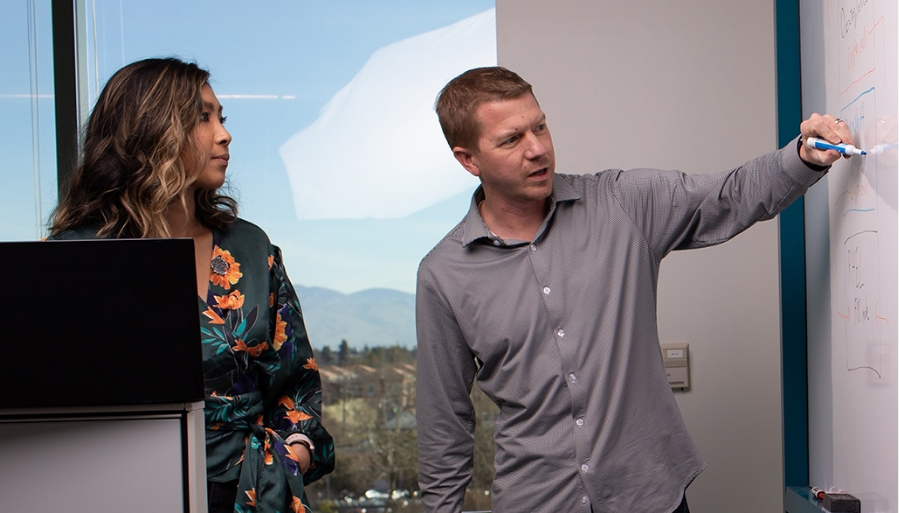Modernize Java applications
Future-proof your existing Java application investments
Overview
Traditional Java application portfolios typically require significant time, effort, and budget to support and maintain. Yet, Java and Java frameworks have evolved significantly for modern container and cloud-native deployments.
Modernizing your Java applications helps you get more from existing investments, and frees time and budget for strategic projects, feature improvements, and new applications to support business initiatives.
Why modernize your Java workloads?
| Challenge | Modernization benefit |
|---|---|
| Multiple JDKs, multiple versions, licensing issues
Keeping JDKs up to date has often been overlooked, some versions no longer receive critical updates. |
Standardize workloads onto a single JDK
Standardizing on a single JDK reduces licensing and support issues. |
| Broad range of Java runtimes and frameworks
Traditional Java application portfolios become hard to maintain and operate consistently. |
Standardize on modern Java runtimes and frameworks
Standardizing helps mitigate risk, and streamlines ongoing development and maintenance. |
| Product end-of-life, outdated frameworks
End of life events means no security updates or bug fixes, including for some frameworks embedded in applications. |
Automate delivery of applications
After standardizing, you can automate delivery pipelines to more easily update or upgrade components in the future. |
| Security, reliability and compliance risk
Outdated components pose serious security risks, and may violate compliance regulations. |
Use trusted components to reduce risk
A trusted software supply chain helps you implement secure code, vulnerability management, and standards compliance. |
| Performance and scaling issues
Performance of traditional Java applications may be hurt due to outdated technology, inefficient code, and limited scalability. |
Update performance and scale
Modernizing your Java applications onto Kubernetes enhances performance and scalability. |
| Multiple operational platforms
Multiple operational platforms create complexity, inconsistency, and compliance challenges for existing applications. |
Standardize footprints
Use Kubernetes to provide a unified platform to deploy, manage and orchestrate applications. |
| Hard-to-maintain Monoliths
Monolithic applications are challenging to maintain due to their large, tightly coupled codebase. |
Break down monoliths
Breaking down monoliths into smaller pieces enables modular development, improved scalability, and faster deployment. |
| Integration needs
New applications require integration with existing applications: a challenge due to often incompatible technologies. |
Cloud–native integration
Integrating on-premises applications with cloud-native applications enables seamless data exchange. |
| Technology dictating process and practices
When technology dictates process and practices, it can lead to suboptimal outcomes. |
Move to modern architecture
Moving to a modern architecture helps you better align technology with your needs, not the needs of your technology. |
| Legacy becoming a talent problem
The pool of talent with expertise in outdated technologies shrinks, and becomes harder to recruit for. |
Modern platforms and technologies
The adoption of modern platforms and technologies attracts a larger talent pool, promotes knowledge transfer. |
| Growing cost risk
Legacy applications pose a growing cost risk due to increasing maintenance, support, and infrastructure expenses. |
Optimize for cost savings
Streamlined code, optimized infrastructure, higher density, enhanced security, and eliminated legacy licenses drive savings. |
Recommended approach
Discovery
Create an inventory of your existing JDKs, runtimes, applications, infrastructure, and software delivery processes and identify current pain points, limitations, and risk (as-is state). Write down business and technical requirements for a future to-be state.
Assessment, planning and design
Conduct assessments on your existing application portfolio, your infrastructure, processes and practices, and determine the future state at each level. Prioritize your assessment findings, define the scope of the modernization effort and create a detailed plan.
Pilot
A representative subset of applications is selected for migration or modernization. This phase helps validate the approach, identify challenges, mitigate risks, build the skills and repeatable patterns, and inform decision-making and planning for the broader modernization effort
Development and deployment
Develop refactored and modernized application components while integrating with other systems and services and deploying to production. Feedback loops and knowledge management are key to increasing velocity and accelerating repeatable patterns.
Operations and maintenance
Shift focus to further optimizing the infrastructure with advanced monitoring, further improving automation, and leveraging advanced platform capabilities. This is an opportunity to optimize the application to the next level, and to plan for future upgrades and enhancements.
Tools
From Red Hat
- Migration Toolkit for Applications
- Konveyor community projects: Konveyor Toolkit, Move2Kube
- Ansible automation for application services
As a result of our collaboration with Red Hat we can get new services and updates to market more than twice as quickly than before, in a more secure way and based on well-defined standards.
Success stories
To support this growth while improving its user experience, DAB sought to unite its many, isolated systems and simplify integration with third-party suppliers. DAB quickly decided to work with Red Hat to create its new infrastructure with a supported enterprise solution.
Resources
Plan your Java application modernization journey
This practical guide will walk you through the Java app modernization journey with Red Hat, with important information contained for both technical and business audiences.
Modernizing Enterprise Java Applications
Free practical e-book (sponsored by Red Hat) that helps developers examine long-established Java-based models and demonstrates how to bring these monolithic applications successfully into the cloud.
Modernize Java applications for cloud
On our developer site you will find tutorials for rehosting, replatforming and refactoring Java applications. This content has lots of information for developers and architects.
Next steps
Try OpenShift
Download the no-cost, 60-day Red Hat OpenShift trial, to help you accelerate your application development and modernization.
Level Up OpenShift
Available to eligible Red Hat customers, the Level Up Program offers an extended period of expert guidance and fully-supported subscriptions for pilot projects or production workloads.
We’re here to help
Red Hat Consulting and our network of certified system integration partners are here to support you at any point of your modernization initiative.


